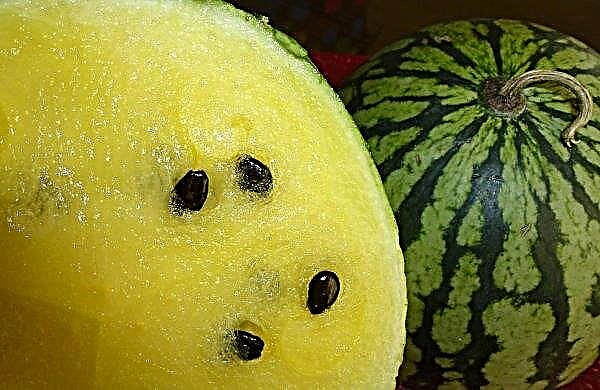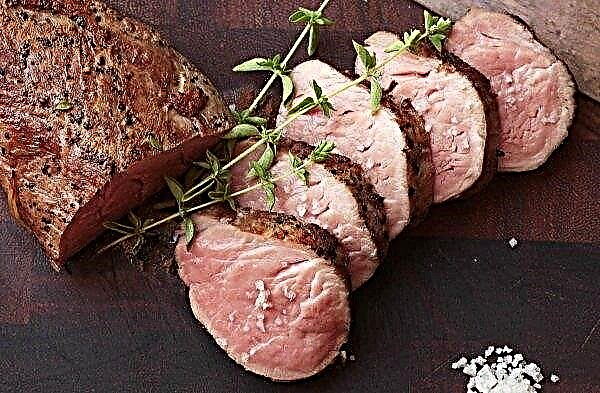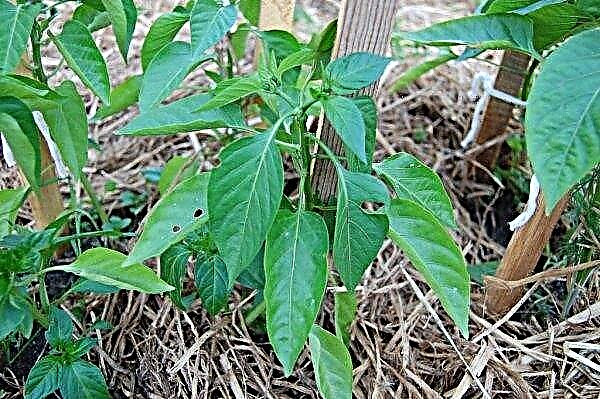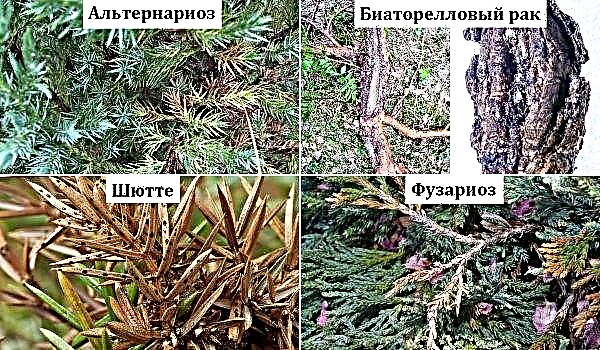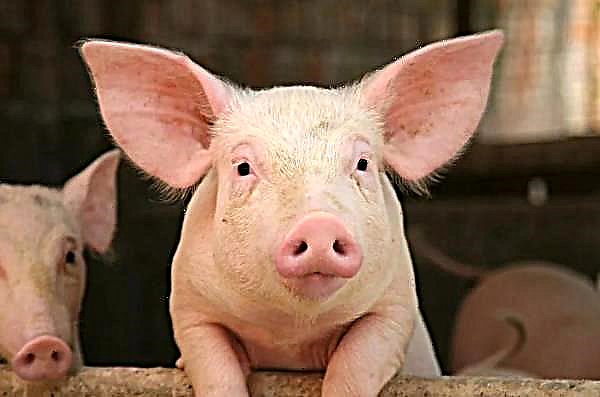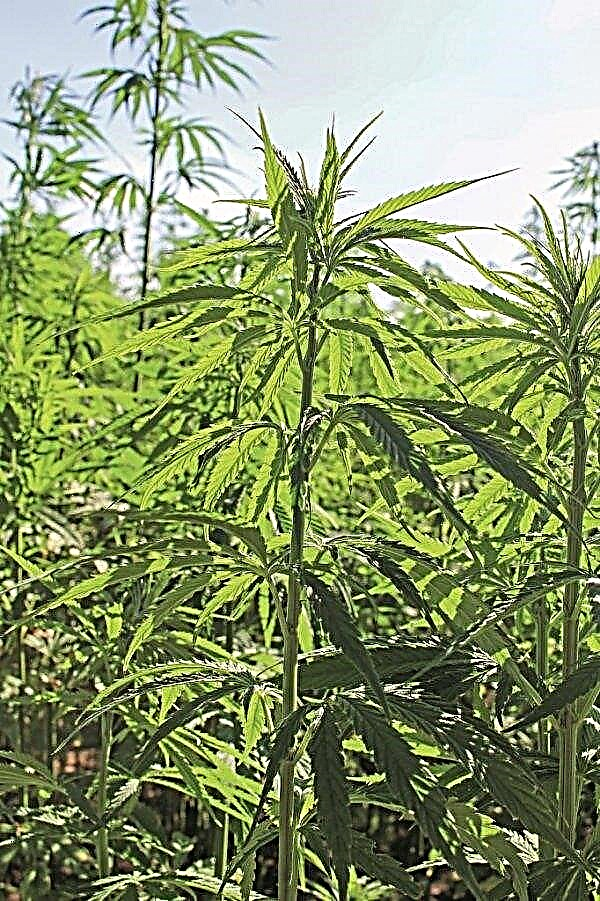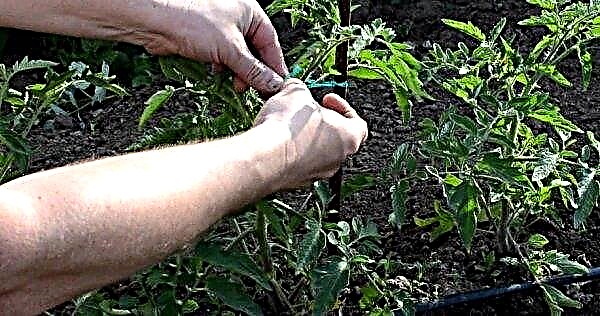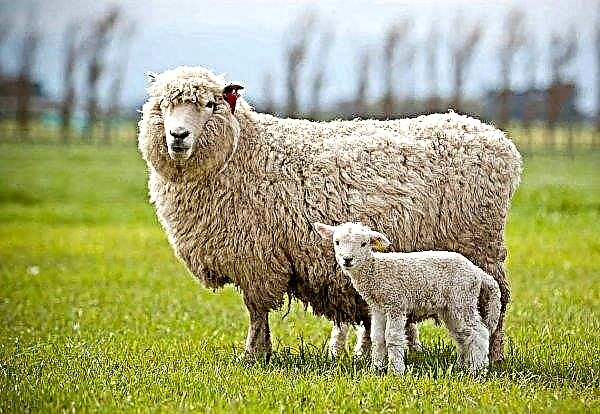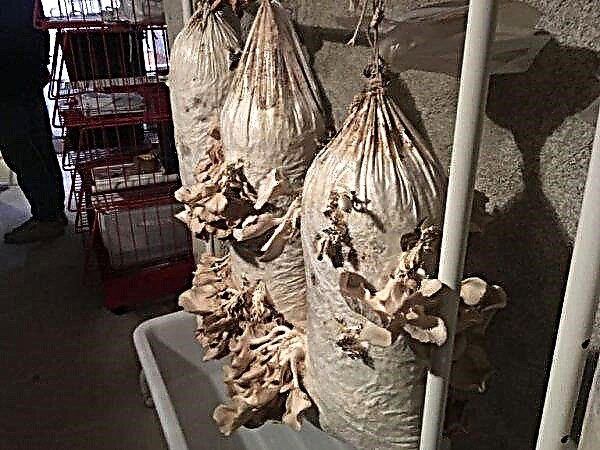Arabian horses have been highly regarded since ancient times. This old breed is popular with horse lovers now. We learn the characteristics of the Arab thoroughbred horses, their nature and scope of use, how to contain them.
Historical data
Arabian horses appeared long ago - presumably long before our era in the deserts and semi-deserts of Arabia. The progenitors of this beautiful breed were Persian, Syrian and North African horses. The Bedouins used this hardy horse for military purposes and prohibited the sale to the side.
Representatives of other breeds were not allowed to Arabian horses, this breed was formed for a long time clean.
Crusaders introduced Europe to Arabian horses. These horses immediately attracted attention and began to participate in the breeding and improvement of other breeds. As a result, many well-known European breeds were obtained. Arabian horses came to Russia under Ivan the Terrible and participated in the formation of the Oryol trotters and streltsy horses.
Did you know? Arabian horses can reach speeds of around 70 km / h. They are tireless - able to overcome 90 miles a day for 5-6 days in a row.
Arabs received at enterprises in Russia and the USSR often took first prizes at exhibitions of world significance and were leaders in exterior data. Now they are raised by the following stud farms - Khrenovsky, Tersky and Moscow.
The Arabian breed is widely bred in different parts of the world. Now the breeding work on them is coordinated by the World Organization of Arabian Horse Breeding.
Breed description
The beautiful exterior and elegance, the positive temperament of these horses have been appreciated since ancient times. The breed is famous for endurance, speed, as well as excellent health and has a long life. Consider the characteristics of the Arabian horses in more detail.
Did you know? Many Arab centenarians live up to 30 years. They are fertile, but their maturation is somewhat belated.
Appearance
Arabian horses are not large in size, have a dry constitution, have rounded body lines with wide and deep chests, and well-developed strong legs. The hooves are very durable. They have the correct constitution with a long curved neck, a long and straight croup.
The tail is set high, and the horse, when moving quickly, raises it even higher. A characteristic feature is also a wide forehead, close to square, with convex eyes and a concave profile on a small head.
The average height at the withers is 153.4 cm for males and 150.6 cm for females. The stallions have a chest circumference of 178.9 cm and the mares have 172.9 cm. The average metacarpal circumference of males is 19.9 cm. in females - 18.4 cm. The mass of an adult reaches 450 kg.
The most common color is all shades of gray. With age, they become buckwheat. Often bay and red Arabian horses. The black suit is less common, and the roan is even less common. It is very rare to find silver-bay color.
Currently, these types of Arabian horses are distinguished by their exterior:
- Coheilan. They have a massive build, a wide chest. Great horses with great stamina. As a rule, bay or red color.
- Siglavi. Thoroughbred specimens of a magnificent exterior of medium build and short stature. They have less agility. Mostly gray.
- Cocheilan siglavi. They are a mixture of the above types, which is expressed in a combination of the beauty and dryness of the addition of the siglava with the massiveness of the cohelain. They have higher growth and excellent working abilities. Color - bay, gray or red.
- Hadban. The largest individuals with the best agility and endurance. Porosity is not expressed. The suit is red or bay, sometimes gray. Most often used in sports.




Scope of application
Speed and endurance is considered the hallmark of Arabian horses of pure blood. They can easily cover long distances without stopping for eating and drinking. They are willingly taken to sports - for races and runs, for amateur races.
Did you know? The anatomical structure of the skeleton of the Arabian horses is different from other breeds. They have 17 ribs (versus 6), there are 5 vertebrae in the lower back, and in ordinary breeds there are 6 of them. There are 16 vertebrae in the tail, while other breeds have 18 vertebrae.
They have high rates in sports at the racetrack. These horses are well trained and perform in the circus. Riding enthusiasts value them and are admitted to beginners and children. The best representatives are used to improve or breed other breeds.
Character
These animals delight their owners with intelligence and a good memory. They study their environment well and ponder their behavior. They are well trained in tricks and are positively attuned to people. Coercion and violence are not applicable to them - they remember grievances and offenders, do not fulfill what is required under coercion.
Their friendliness and devotion are combined with a proud disposition. They prefer to obey a strong rider and become very attached to him. They are indifferent to strangers.
Advantages and disadvantages
- The undoubted advantages, time-tested, include:
- beautiful exterior;
- endurance and ability to ride for a long time;
- speed and agility;
- good character and learning ability;
- thoroughbredness;
- suitability for breeding and reproduction of other breeds;
- excellent health and long life;
- fertility;
- well tolerate hot and arid conditions.
- There are very few drawbacks:
- short stature;
- some sensitivity of their body to cold, dampness and food.

Home Content
Arab horses can be kept individually or in herds. The herd method is the most profitable, since it allows you to get stronger representatives of the breed.
Stable
First of all, the stables for the maintenance of this breed must be roomy, clean and quite warm. They should be located away from water bodies, settlements and highways. The foundation must be well insulated from moisture.
The floor is made of clay and concrete warm in the stall, and in the passage of concrete or wood. It is necessary to take care of small gutters to the exit to remove liquid masses from the stall.
A litter of straw and sawdust is placed on the floor with a layer of 10–20 cm. The walls should not allow cold and keep warm. The recommended thickness of the walls of the stable during cool winters is from 20 to 25 cm. During construction it is better to use brick or wood, you can use adobe. For the roof they use slate.
The recommended height of the walls of the room for maintenance is 3–3.5 m. Be sure to take care of the ventilation of the room, but without drafts. For these purposes, a forced-air and exhaust ventilation system is often installed. The optimum temperature regime is +5 ... + 15 ° С.
It is necessary to provide normal illumination of the room for keeping horses. Window openings should be at a height of 2 m from floor level so that the sun's rays do not blind animals. In cold climates, double glazed windows are installed. You can also use artificial lighting. The feeders should be positioned 1 m above the floor. Their recommended depth is 0.3–0.4 m, and the width should correspond to the width of the stall.
The feeders should be positioned 1 m above the floor. Their recommended depth is 0.3–0.4 m, and the width should correspond to the width of the stall.
It is also necessary to equip utility rooms for staff, washing horses, storing feed, equipment. Near the stable it is worth organizing a paddock for walking, based on the ratio of 20 m² per 1 individual.
Important! Arabian horses tolerate different conditions, especially the arid climate. Breeders note that they are sensitive to damp, cold weather.
Care
The appearance and cleanliness of the horse must be monitored every day. You need to bathe a horse properly so as not to harm the skin.
For care of horses it is worth stocking up with the following tools:
- hair and whalebone brushes;
- scrapers made of rubber and plastic;
- rubber groomer;
- crests of wood;
- hoof cleaning hook;
- sponges for the face and body parts;
- velvet cloth;
- a vacuum cleaner.
Specialists for the proper washing of horses give the following recommendations:
- It is necessary to brush the horse in the direction from the neck to the back, and then to the sides and stomach.
- The last to clean the limbs with hooves.
- The hair brush is moved first against hair growth, and then along the hair growth.
- The groove should be carried out along the body, cleaning the dirt and sweat.
- Wash the body, neck and legs with a moistened sponge, and then wipe dry with a cloth.
- Use another moistened sponge to cleanse your face, remembering to rinse your nostrils, ears and eyes.
- Wipe dry.
- Shampoo horses wash mane, bangs and tail.
- Carefully comb the hair with a comb, using other combs and brushes for the tail.
- With a special hook to clean the hooves of adhering particles.
- Dry the animal with a vacuum cleaner with nozzles for different parts of the body.
- Walk the horse for 20 minutes in fairly warm weather.
 The horseshoe protects the hooves from damage and cracks.
The horseshoe protects the hooves from damage and cracks.Use several types of horseshoes for Arabian horses:
- Universal. The most common type.
- Special. Used for horse racing, promotes proper gait. Well suited in orthopedic terms. They are used for injuries and bruises of the legs.
- Studded. Use in winter for more convenient movement on icy tracks.
Cleaning
Arabian horses love cleanliness, therefore it is necessary to observe hygiene standards when keeping these animals. In the morning, you need to clean the stall.
To carry out these works, you will need the following inventory:
- bathrobe;
- gloves
- shovels and manure forks;
- broom;
- shovel;
- small trolley.
Every day you need to clean the litter, replacing it with a clean and dry.
Did you know? Horses defecate 10–12 times during the day, releasing 7 liters of fluid.
Complete replacement of bedding material and cleaning of the premises is carried out once every 7 days. During cleaning, the horse is taken out of the stall and waiting for everything to dry after cleaning. The feeders and shelves should be cleaned daily. All food residues are removed from the feeders, and in the drinking bowls the water is changed to clean.
Feeding and drinking
When caring for horses, drinking and a good diet are important. Food must be fresh, water is clean. Food is necessary balanced with the content of all the necessary vitamins, minerals and substances for the good functioning of the horse's body. It is imperative to provide animals with the necessary amount of hay.
It is necessary to ensure that water is always in the required quantity. Watering is carried out before taking food 4-5 times during the day. In the warm period, the fluid rate for 1 adult is 45-60 liters, in the cold - 25-40 liters. Water temperature should be +10 ... + 15 ° С.
Important! After a horse’s physical activity (training, competition, horse racing), don’t give a drink for half an hour.
The main and traditional food for the Arabian horse is wheat. It is necessary to include about 5 kg (1 kg of sports horses) of purified and steamed oats per 1 individual in daily nutrition. The daily dose of straw from oats or wheat should be at least 0.5 kg.
Barley, despite its nutritional value, is hardly absorbed by Arabian horses, therefore it is used in small quantities or as an additive to the main diet. Barley is usually mixed with hay. Do not include rye in your diet, as this cereal is poorly tolerated by animals.
Hay from grass (alfalfa) should have a moisture content of 15%. It should be given 4-5 times a day, 1 kg each. The diet should also include daily bran (from wheat or oats) in an amount of 1 kg. They contain the necessary phosphorus for animals.
Legumes are included in the diet of training horses as a source of protein, as well as stallions that are used for breeding. Steamed flax seeds have a good effect on the coat of a horse. The daily intake is 0.5 kg per individual, for training horses this rate is 1 kg. It is necessary to give animals fats - fish oil, as well as vegetable oil.
Steamed flax seeds have a good effect on the coat of a horse. The daily intake is 0.5 kg per individual, for training horses this rate is 1 kg. It is necessary to give animals fats - fish oil, as well as vegetable oil.
Probiotics should also be included in the diet - beneficial bacteria that have a beneficial effect on the intestinal microflora and, accordingly, the digestion of horses. For this purpose, use culinary, beer, bread yeast. They contain many B vitamins and promote the absorption of fiber.
Fresh vegetables and fruits are given as a source of fiber - beets, carrots, apples, cabbage, bananas.
Disease prevention
Horses of the Arabian breed are quite resistant to many diseases, but still, like many animals, they can hurt. The main thing is to timely identify and take measures to treat the disease, as well as carry out preventive measures aimed at preventing the appearance of diseases.
To prevent the occurrence of this problem, it is recommended to adhere to the following rules:
- gradually move from chopped feed to larger;
- purchase only high-quality feed for feeding;
- do not soak the feed in water, as this process causes the release of unnecessary enzymes;
- the daily intake should be increased gradually, without drastic changes;
- the necessary amount of fiber should be included in the diet.
Due to trauma to the upper layer of the limbs, laminitis can occur under the hooves. Signs of this disease are a mincing step, problems with movement, fever in the legs. The reason for the appearance is a long stay on a hard surface or excessive feeding. If this disease is detected, you should contact the veterinary service and take the following measures:
If this disease is detected, you should contact the veterinary service and take the following measures:
- move the horse into a stall with a flat surface;
- remove all food before visiting a veterinarian, but provide clean drink;
- exclude or limit contact with grass or asphalt;
- carefully rinse the hooves, treat with an anti-inflammatory drug.
Important! Arabian horses are prone to colic stomach. Their gastrointestinal tract is very sensitive and reacts negatively to poorly selected food, poor-quality food.
In order to prevent the occurrence of infection and viral diseases, carry out a routine examination at the veterinary services, take the necessary tests in the laboratory to carry out the necessary studies, vaccinate the animals. It is mandatory to get vaccinations against influenza, anthrax, rabies, tetanus and rhinopneumonia.
Every six months, donate blood to the laboratory for the detection of diseases - glanders, accidental illness, anemia of an infectious nature, leptospirosis.
At the slightest ailment of animals, invite a veterinarian for an unscheduled examination.
Arabian horses combine excellent external data, endurance and speed. They are often used in races, have good intelligence, are friendly, but do nothing under duress.

